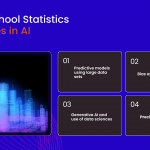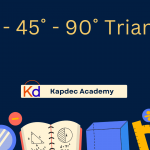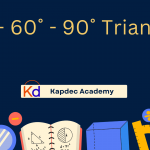When you think of physics, you might picture equations, textbooks, and problem sets — not the adrenaline rush of a roller coaster ride. But in reality, roller coasters are one of the best real-world laboratories for understanding the laws of motion, energy, and forces.
Every climb, drop, twist, and loop demonstrates a physics principle in action — making them thrilling examples of how classroom concepts come alive in the real world [1].
1. Energy Transformation: From Potential to Kinetic
The magic begins at the very start of the ride. When the roller coaster climbs the first hill, the motorized lift gives it gravitational potential energy (PE = mgh).
Once it crests the peak and begins its descent, that stored energy converts into kinetic energy (KE = ½mv²) — the energy of motion. The steeper the drop, the faster the ride.
Physics takeaway:
Energy is never lost — it just transforms. The ups and downs of the track constantly swap potential and kinetic energy.
2. Newton’s Laws in Motion
Roller coasters perfectly demonstrate Newton’s three laws of motion:
- First Law (Inertia): Riders remain at rest or in motion until acted upon by an external force — like brakes or gravity.
- Second Law (F = ma): The greater the force applied (by gravity or acceleration), the more intense the motion.
- Third Law (Action–Reaction): When the coaster car pushes on the track, the track pushes back equally — allowing the coaster to stay on the rails even during loops.
Next time you feel your seat pressing against you on a curve — that’s physics in action.
3. Circular Motion and Centripetal Force
Those dizzying loops and turns rely on centripetal force — the inward force that keeps you moving in a circular path.
When you go through a loop, you’re actually being pulled toward the center of the curve, not outward (even though it feels like it). That’s why engineers design loops in a teardrop or “clothoid” shape — to maintain just the right balance of speed and force so riders don’t feel too much pressure.
Physics takeaway:
Without centripetal force, the coaster — and you — would fly off the track!
4. Friction and Air Resistance
As the coaster zooms through the track, friction between the wheels and rails and air resistance gradually reduce its energy [2].
That’s why coasters slow down over time and need that first hill to be the tallest — after that, gravity does the rest, but energy losses are inevitable.
In physics terms:
These forces convert mechanical energy into heat and sound energy, explaining why you hear that thrilling “whoosh” and feel the vibration.
5. Safety Through Physics
The thrill is real — but so is the safety science behind it. Engineers use kinematics, dynamics, and structural physics to calculate g-forces, velocity, and acceleration to ensure every turn and drop stays within safe limits.
Computer simulations use equations from AP Physics C (Mechanics) to model every possible motion. Even braking systems rely on magnetic and frictional force principles to bring cars to a smooth stop.
Kapdec’s AP Physics programs dive deep into these exact topics, helping students connect theory to real-world engineering applications like roller coaster design.
6. Why Roller Coasters Are the Perfect Physics Lab
Roller coasters combine almost every major topic in physics:
- Energy and work
- Newton’s laws
- Motion and acceleration
- Friction and air resistance
- Centripetal force
- Engineering safety
They show that physics isn’t just equations — it’s the language that explains how the world moves, spins, and thrills us.
FAQ’s
How does a roller coaster demonstrate the law of conservation of energy?
A roller coaster converts potential energy at the highest point into kinetic energy as it moves downward. The total energy remains constant (ignoring friction), perfectly illustrating the law of conservation of energy in motion.
Why does a roller coaster not need an engine after the first drop?
Once the coaster descends the first hill, gravitational potential energy converts into kinetic energy, which keeps it moving. The initial climb stores enough energy to power the rest of the ride through ups, downs, and loops.
How is Newton’s First Law applied in a roller coaster ride?
Newton’s First Law states that an object in motion stays in motion unless acted upon by an external force. On a roller coaster, inertia keeps riders moving along the track until brakes or friction slow it down.
What role does gravity play in a roller coaster’s motion?
Gravity is the driving force behind the coaster’s movement. It pulls the cars down slopes, increases speed during descents, and works against motion during climbs—constantly converting energy forms throughout the ride.
How do roller coaster loops demonstrate centripetal force?
When the coaster moves through a loop, centripetal force keeps the riders pressed into their seats. The combination of speed and curved track design generates this inward force, creating that thrilling “stuck to the seat” feeling.
Why don’t riders fall out when the coaster goes upside down
At the top of a loop, centripetal acceleration and gravity act together to keep riders in place. The coaster’s high speed ensures there’s enough normal force between the seat and rider to prevent falling out.
How does friction affect a roller coaster’s performance?
Friction between the wheels and track, and air resistance, slowly reduce the coaster’s total mechanical energy. Designers account for this by ensuring enough height and speed to complete the entire course safely.
What physics concepts do engineers use to design roller coasters safely?
Engineers apply dynamics, energy conservation, g-forces, and structural mechanics to ensure both thrill and safety. Every curve, hill, and loop is calculated to manage speed, acceleration, and rider comfort precisely.
Final Thought
Physics is everywhere — even at your favorite amusement park. The next time you’re on a roller coaster, remember: every climb, drop, and scream is a lesson in motion, force, and energy.
At Kapdec, we turn these real-life examples into meaningful learning — helping students explore advanced physics through interactive problems, conceptual videos, and application-based exercises that make science come alive.






